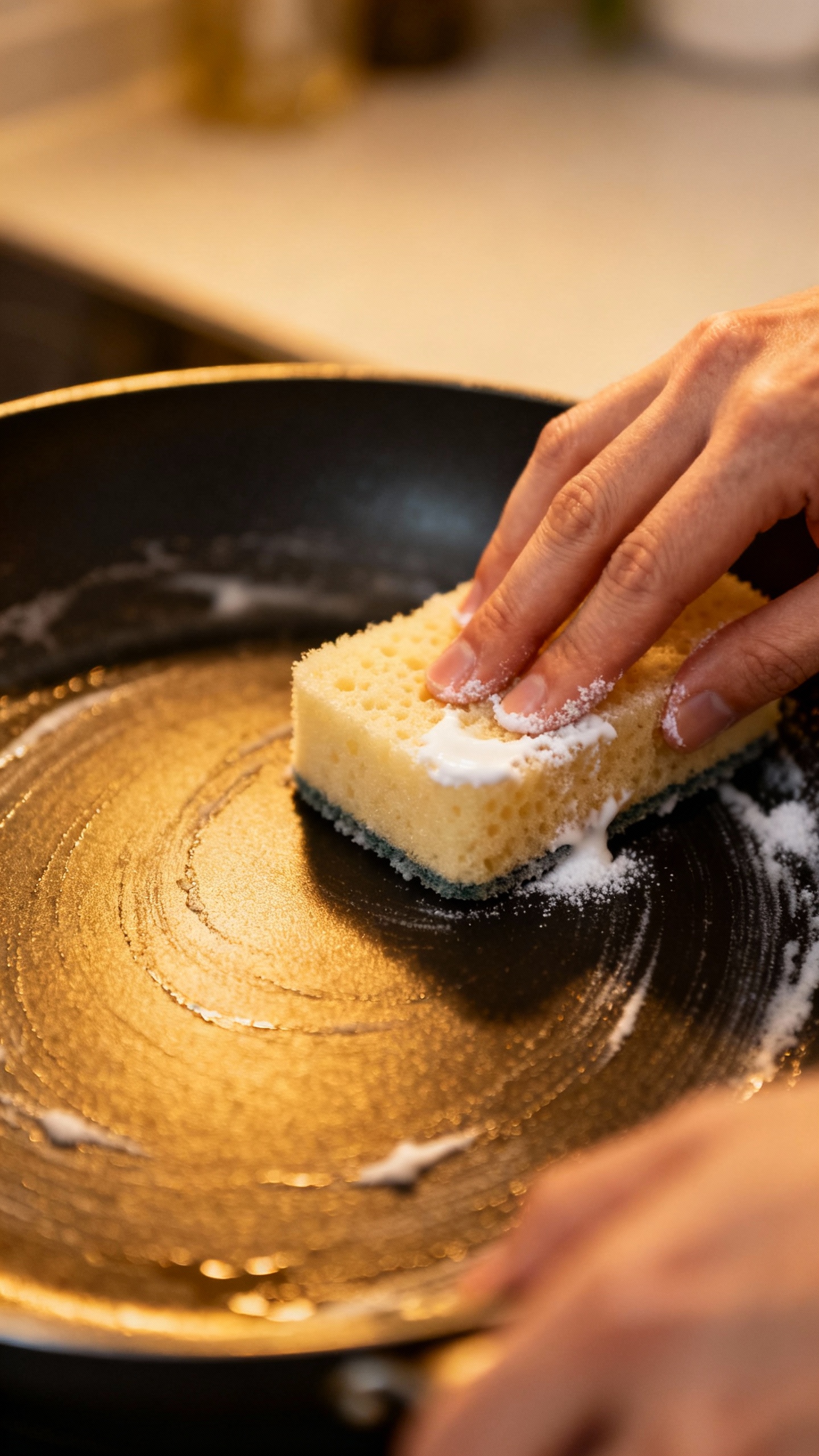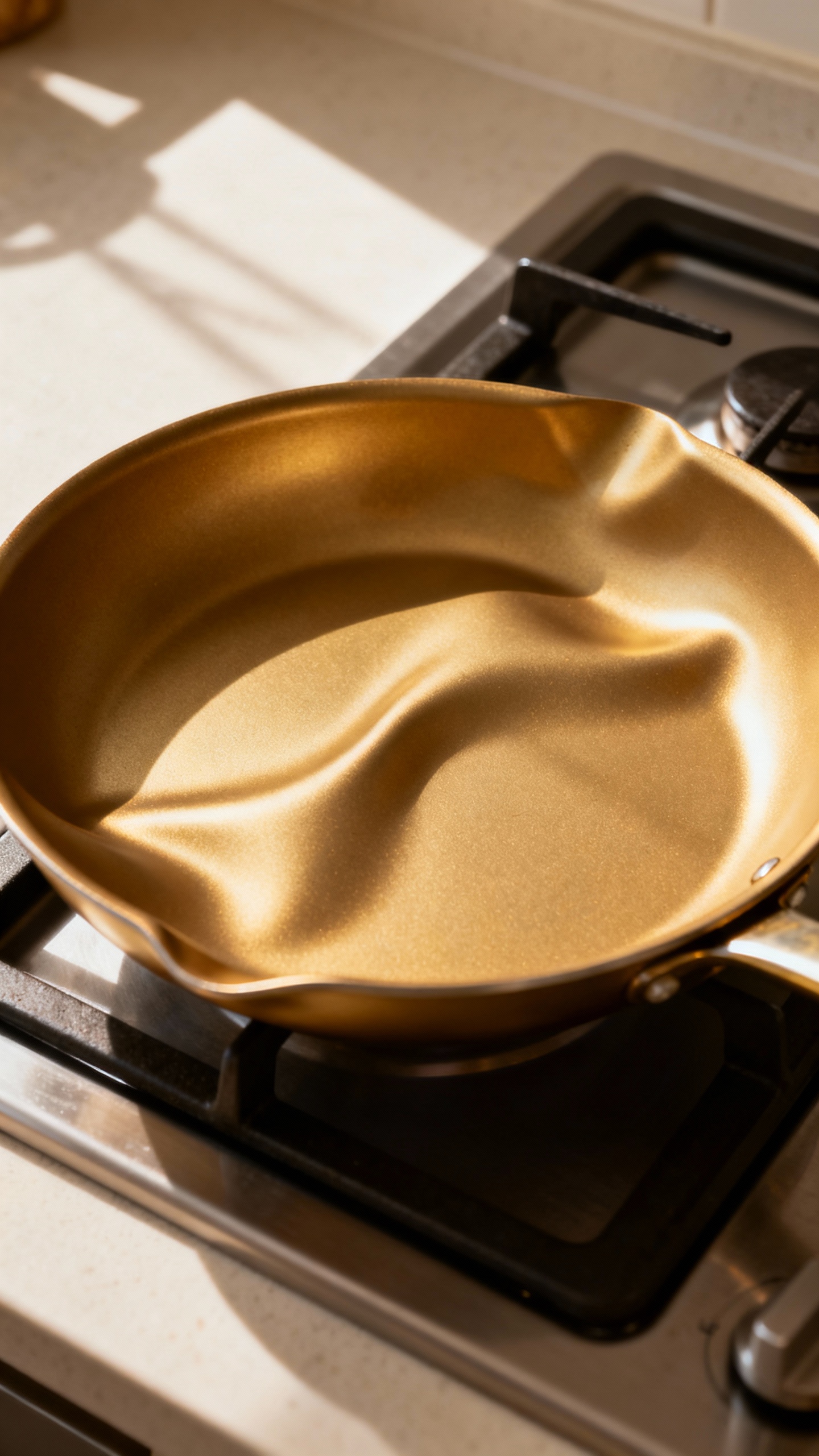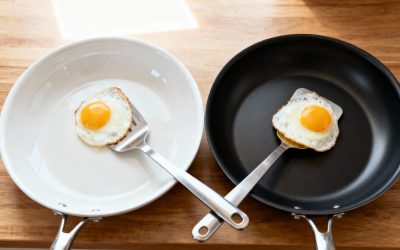Your eggs used to glide out of the pan like a figure skater. Now they stick, tear, and ruin breakfast and your mood. What happened?
Short answer: your nonstick pan didn’t betray you—it just got treated like a cast iron wannabe. Let’s talk about why the coating bails, what actually kills it, and how you can keep your next pan from dying young.
What Nonstick Coating Really Is (And Why It’s Not Immortal)
Nonstick coatings usually come in two flavors: PTFE (Teflon) or ceramic. PTFE feels slick and “slidy,” ceramic looks glossy and can brown well.
Both make cleanup easy, both hate abuse. Nonstick isn’t a force field. It’s a thin layer bonded to metal.
You scratch it, overheat it, or shock it—game over. If you treat it right, you’ll get years. Treat it like stainless steel?
You’ll get months, maybe weeks.
The Real Reasons Your Coating Fades
You’ll hear myths like “dishwashers melt the coating.” Not exactly. The truth includes a few main culprits, and yeah, some might sound familiar.
1) Overheating (the silent killer)
Crank the burner to high and your PTFE coating can degrade fast. Ceramic doesn’t melt, but it loses smoothness and becomes sticky over time.
High heat burns oils onto the surface and roughs up the coating so food grabs on. Rule of thumb: Use low to medium heat for almost everything on nonstick. If you need searing heat, use stainless or cast iron.
2) Dry preheating
Heating an empty nonstick pan is like sunbathing without sunscreen. The pan heats too fast, the coating suffers, and you can warp the base. Fix: Add a splash of oil or a bit of water before heating.
It acts like a temperature speed bump.
3) Metal utensils and “just a quick scrape”
Metal tongs, forks, or a metal spatula will nick the surface. One nick turns into a weak spot, then peeling starts. You know this.
We all do it anyway. IMO, it’s the most preventable death. Use: Silicone, nylon, or wood. Your pan will thank you.
Your eggs will too.
4) Abrasive cleaning
Scouring pads, powdered cleansers, and steel wool chew up coatings. Even some rough dish brushes cause micro-scratches. Skip: Anything labeled “scouring.” Use soft sponges and mild soap. If you need more oomph, baking soda + water paste, gentle rub, rinse.
5) Cooking sprays (yes, really)
Aerosol sprays can leave a sticky, polymerized film that builds up into a tacky layer.
It feels like the nonstick died, but it’s actually residue. Use instead: A teaspoon of regular cooking oil or butter. Lightly wipe the pan with a paper towel to coat.
6) Thermal shock and warping
Rinsing a hot pan under cold water can warp the metal. Once the pan warps, your coating flexes unevenly and starts to fail. Rule: Let it cool on the stove before washing.
Patience beats potholes.

How To Fix a Pan That’s Already Sticky
You can’t regrow a coating (if only). But you can often restore some slickness and remove gunk that acts like Velcro.
Deep-clean the residue
Try this once a month or when things start sticking:
- Fill the pan with warm water and a few drops of dish soap. Simmer for 5–10 minutes.
- Cool slightly, then gently scrub with a soft sponge.
- Make a paste of baking soda + water.Rub it in circles, rinse well.
- Dry completely on low heat.
This lifts polymerized oils and cooking spray residue. You might get 70–80% of the slickness back if the problem was buildup, not coating failure.
Re-season your nonstick (yes, it helps)
Not the cast-iron way—just a light season:
- Heat the clean, dry pan on low.
- Add 1 teaspoon of neutral oil (canola, grapeseed, avocado). Swirl to coat.
- Keep it on low for 2–3 minutes, then turn off heat and cool.
- Wipe out the excess with a paper towel.
This fills micro-scratches and can buy you smoother cooking for a while.
Know when it’s done
If the coating visibly peels, flakes, or feels rough like sandpaper, it’s retirement time.
You can’t fix that safely or effectively.
Everyday Habits That Make Nonstick Last Longer
You don’t need to baby it, but a little mindfulness saves money.
- Heat smart: Low to medium. Save high heat for steak night with a different pan.
- Fat is your friend: A bit of oil prevents hot spots and sticking.
- Utensil discipline: Silicone or wood only.
- Hand wash: Mild soap, soft sponge. Dishwasher occasionally?Fine, but FYI it shortens lifespan over time.
- Stack carefully: Use a pan protector or a towel between pans.
- Cool first, then clean: Avoid thermal shock.

PTFE vs. Ceramic: Which Fails Faster?
Both have pros and cons, and neither lasts forever.
PTFE (Teflon-style)
- Strengths: Super slick, great for eggs and crepes, durable if you avoid high heat.
- Weaknesses: Hates high heat and dry preheating. Can degrade if overheated repeatedly.
- Lifespan: Often 2–5 years with good care, IMO the best all-around longevity.
Ceramic
- Strengths: Good browning, no PTFE.Feels “natural” to some folks.
- Weaknesses: Loses slickness faster due to surface micro-roughening, even with decent care.
- Lifespan: Often 1–2 years before you notice more sticking.
When To Replace—And What To Buy Next
You don’t need a $200 pan to fry an egg. You need the right construction and thickness.
Signs it’s time
- Coating flakes or blisters.
- Pan warps and spins on your stovetop.
- Food sticks even after deep cleaning and light seasoning.
Smart buying tips
- Go midweight: Thin pans warp; ultra-heavy pans heat slowly. Aim for sturdy but not cast-iron heavy.
- Riveted handles with smooth interior: Fewer crevices = easier cleaning.
- Avoid rough interior textures: Smooth coatings stick less over time.
- Stick to frying pans: You don’t need a whole nonstick set.One good skillet covers eggs, pancakes, delicate fish.
Common Mistakes That Shorten Lifespan (AKA, Don’t Do These)
- Preheating empty on high: Instant regret.
- Spraying cooking spray every time: Sticky residue city.
- Scraping with a fork: Don’t. Ever.
- Using it for everything: Sear steaks and blacken fish in stainless or cast iron.
- Storing with other pans scraping the surface: Use a protector or towel.
FAQ
Is a flaking nonstick pan dangerous?
If the coating flakes, toss the pan. PTFE flakes themselves aren’t considered highly toxic, but you don’t want them in food.
More importantly, flaking means the coating has failed and can degrade further with heat. Replace it.
Can I put my nonstick in the dishwasher?
You can, but it’s not ideal. Detergents and high heat chip away at longevity, especially on cheaper pans.
Hand wash most of the time for a longer life. FYI, the handle and rivets also suffer in dishwashers.
Do I need oil in a nonstick pan?
Yes—just a little. Oil evens out heat, prevents hotspots, and improves browning.
You’ll use way less oil than with stainless, but a teaspoon goes a long way.
How hot is too hot?
For nonstick, aim for low to medium. If you see oil smoking, you’ve gone too far. On most home stoves, anything past medium-high is risky without food in the pan absorbing heat.
Can I “recoat” a nonstick pan at home?
No legit DIY recoating exists for consumer pans.
Some commercial services can recoat, but it usually costs more than a new pan. If it’s badly worn, replace it.
What about induction stoves?
Induction heats fast, which means you can accidentally overheat an empty pan in seconds. Keep the temp moderate and add oil or food early.
Use induction-compatible pans with flat, stable bases.
Bottom Line
Your nonstick pan isn’t fragile—it just has boundaries. Keep the heat reasonable, skip metal utensils, avoid sprays, and wash gently. Deep-clean residue and lightly season now and then.
When it finally gives up, replace it without guilt and treat the new one right. Your eggs will slide again, and your sanity will return. IMO, that’s a win.




0 Comments